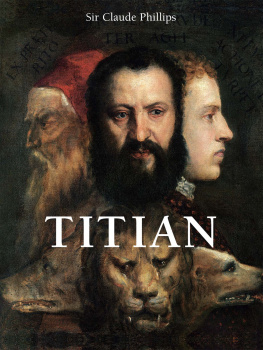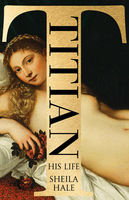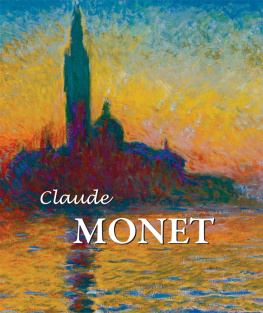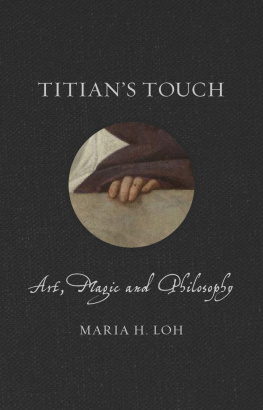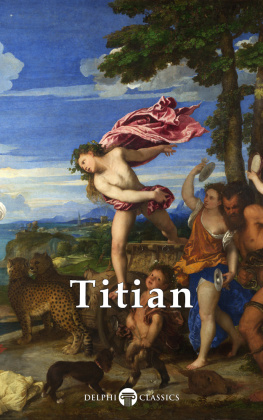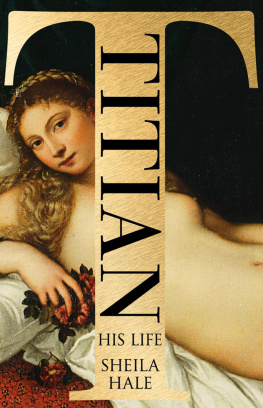Author: Sir Claude Phillips
Layout:
BASELINE CO LTD
61A-63A Vo Van Tan Street
4 th Floor
District 3, Ho Chi Minh City
Vietnam
Parkstone Press International, New York, USA
Confidential Concepts, Worldwide, USA
Image-Bar www.image-bar.com
All rights of adaptation and reproduction reserved for all countries. Except as stated otherwise, the copyright to works reproduced belongs to the photographers who created them. In spite of our best efforts, we have been unable to establish the right of authorship in certain cases. Any objections or claims should be brought to the attention of the publisher.
ISBN: 978-1-78525-938-8
Sir Claude Phillips
TITIAN

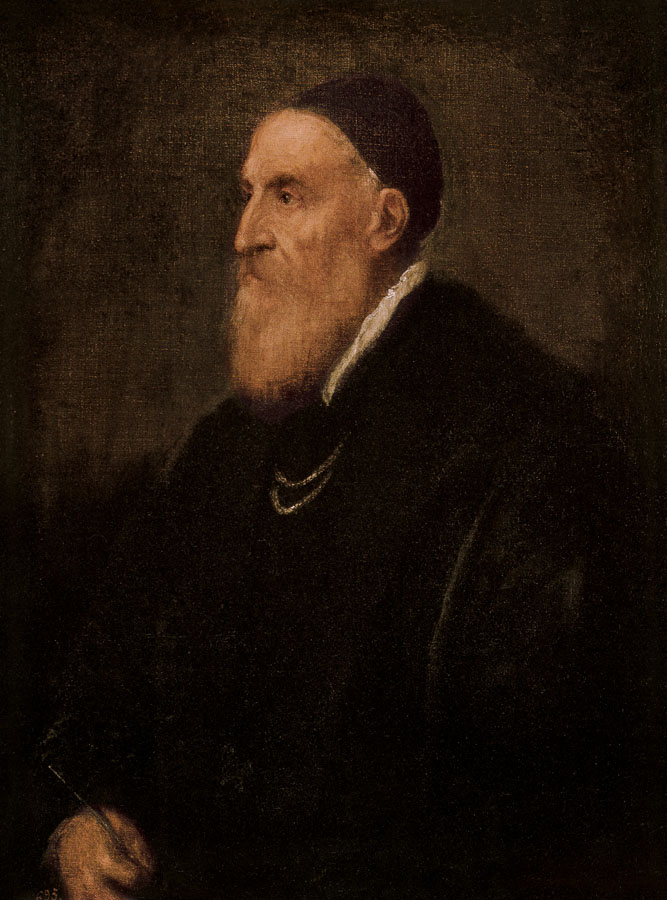
Titian (Tiziano Vecellio), Self-Portrait, 1565-1570.
Oil on canvas, 86 x 65 cm. Museo Nacional del Prado, Madrid.
CONTENTS
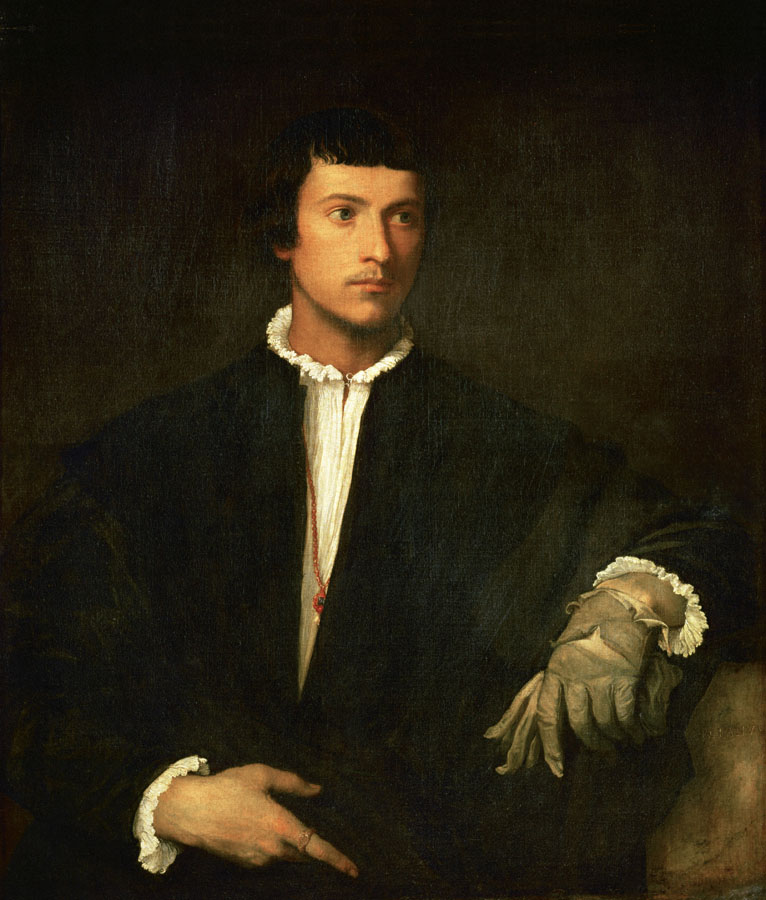
Titian (Tiziano Vecellio), Man with a Glove, c. 1520.
Oil on canvas, 100 x 89 cm. Muse du Louvre, Paris.
THE EARLIER WORK OF TITIAN
Tiziano Vecelli was born in the last quarter of the fifteenth century at Pieve di Cadore, a district of the southern Tyrol then belonging to the Republic of Venice. He was the son of Gregorio di Conte Vecelli and his wife Lucia. His father came from an ancient family of the name of Guecello (or Vecellio), established in the valley of Cadore. An ancestor, Ser Guecello di Tommasro da Pozzale, had been elected Podesta of Cadore as far back as 1321. The name Tiziano would appear to have been a traditional one in the family. Among others we find a contemporary Tiziano Vecelli, who was a lawyer of note concerned in the administration of Cadore, keeping up a kind of obsequious friendship with his famous cousin in Venice. The Tizianello who in 1622 dedicated an anonymous Life of Titian known as Tizianellos Anonimo to the Countess of Arundel, and who died in Venice in 1650, was Titians cousin thrice removed.
Gregorio Vecelli was a valiant soldier, distinguished for his bravery in the field and his wisdom in the council of Cadore, but not, it may be assumed, possessed of wealth or, in a poor mountain district like Cadore, endowed with the means of obtaining it. At the age of nine, according to Dolce in the Dialogo della Pittura, or of ten, according to Tizianellos Anonimo, Titian was taken from Cadore to Venice to begin his painting studies. Whether he had previously received some slight tuition in the rudiments of the art, or had only shown a natural inclination to become a painter, cannot be ascertained with any precision. What is much more vital in our study of the masters life-work is to ascertain how far the scenery of his native Cadore left a permanent impression on his landscape art, and in what way his descent from a family of hardy mountaineers and soldiers of a certain birth and breeding contributed to shape his individuality in its development to maturity. It has been almost universally assumed that Titian throughout his career made use of the mountain scenery of Cadore in the backgrounds of his pictures. However, except for the great Battle of Cadore itself (now known only in Fontanas print, in a reduced version of part of the composition to be found at the Galleria degli Uffizi, and in a drawing of Rubens at the Albertina), this is only true in a modified sense. Undoubtedly, both in the backgrounds to altarpieces, Holy Families, and Sacred Conversations, and in the landscape drawings of the type so freely copied and adapted by Domenico Campagnola, we find the jagged, naked peaks of the Dolomites aspiring to the heavens. The majority of the time, however, the middle distance and foreground to these is not the scenery of the higher Alps, with its abrupt contrasts, monotonous vesture of fir or pine forests clothing the mountain sides, and its relatively harsh and cold colouring. It is the richer vegetation of the lower slopes of the Friulan Mountains, or beautiful hills bordering upon the overflowing richness of the Venetian plain. Here the painter found greater variety, greater softness in the play of light, and richness more suitable to the character of Venetian art. He had the amplest opportunities for studying these tracts of country, as well as the more grandiose scenery of his native Cadore itself in the course of his many journeys from Venice to Pieve and back, as well as in his shorter expeditions on the Venetian mainland. The extent to which Titians Alpine origin, and his early upbringing among impoverished mountaineers, may account for his excessive eagerness to reap all the material advantages of his artistic pre-eminence, for his unresting energy when any post was to be obtained or any payment to be got in, must be a matter for individual appreciation. Josiah Gilbert quoted by Crowe and Cavalcaselle would prefer to leave Giovanni Bellini out of Titians artistic descent altogether. However, certain traces of Gentiles influence may be observed in the art of the Cadorine painter, especially in the earlier portraiture, but particularly in the methods of technical execution generally. On the other hand, no existing earlier works suggest the view that he was part of the inner circle of Giovanni Bellinis pupils one of the discipuli (disciples), as some of these were fond of describing themselves. No young artist painting in Venice in the last years of the fifteenth century could, however, entirely withdraw himself from the influence of the veteran master, whether he actually belonged to his following or not. Giovanni Bellini exercised upon the contemporary art of Venice and the Veneto an influence as strong as that of Leonardo on that of Milan and the adjacent regions during his Milanese period. The latter not only stamped his art on the works of his own special school, but fascinated in the long run the painters of the specifically Milanese group which sprang from Foppa and Borgognone; such men as Ambrogio de Predis, Bernardino de Conti and the somewhat later Bernardino Luini. Even Alvise Vivarini, the vigorous head of the opposite school in its latest quattrocento development, bowed to the fashion for the Bellinesque conceptions of a certain class when he painted the Madonnas of the Redentore and San Giovanni in Bragora in Venice, and the similar one now in the Kunsthistorisches Museum. Bernard Berenson was the first to trace the artistic connection between Vivarini and Lorenzo Lotto, who was to a marked extent under the influence of Giovanni Bellini in such works as the altarpiece of Santa Cristina near Treviso, the Madonna and Child with Saints, and the Madonna and Child with Saint Peter Martyr in the Naples Museum. In the Marriage of Saint Catherine at Munich, though it belongs to the early period, he is, both as regards exaggerations of movement and delightful peculiarities of colour, essentially himself. Marco Basaiti, who up to the date of Alvise Vivarinis death was intimately connected with him, and so far as he could faithfully reproduce the characteristics of his incisive style, was transformed in his later years into something very like a satellite of Giovanni Bellini. Cima, who in his technical processes belongs rather to the Vivarini than to the Bellini group, was to a great extent overshadowed, though never, as some would have it, absorbed to the point of absolute imitation, by his greater contemporary.
Next page
